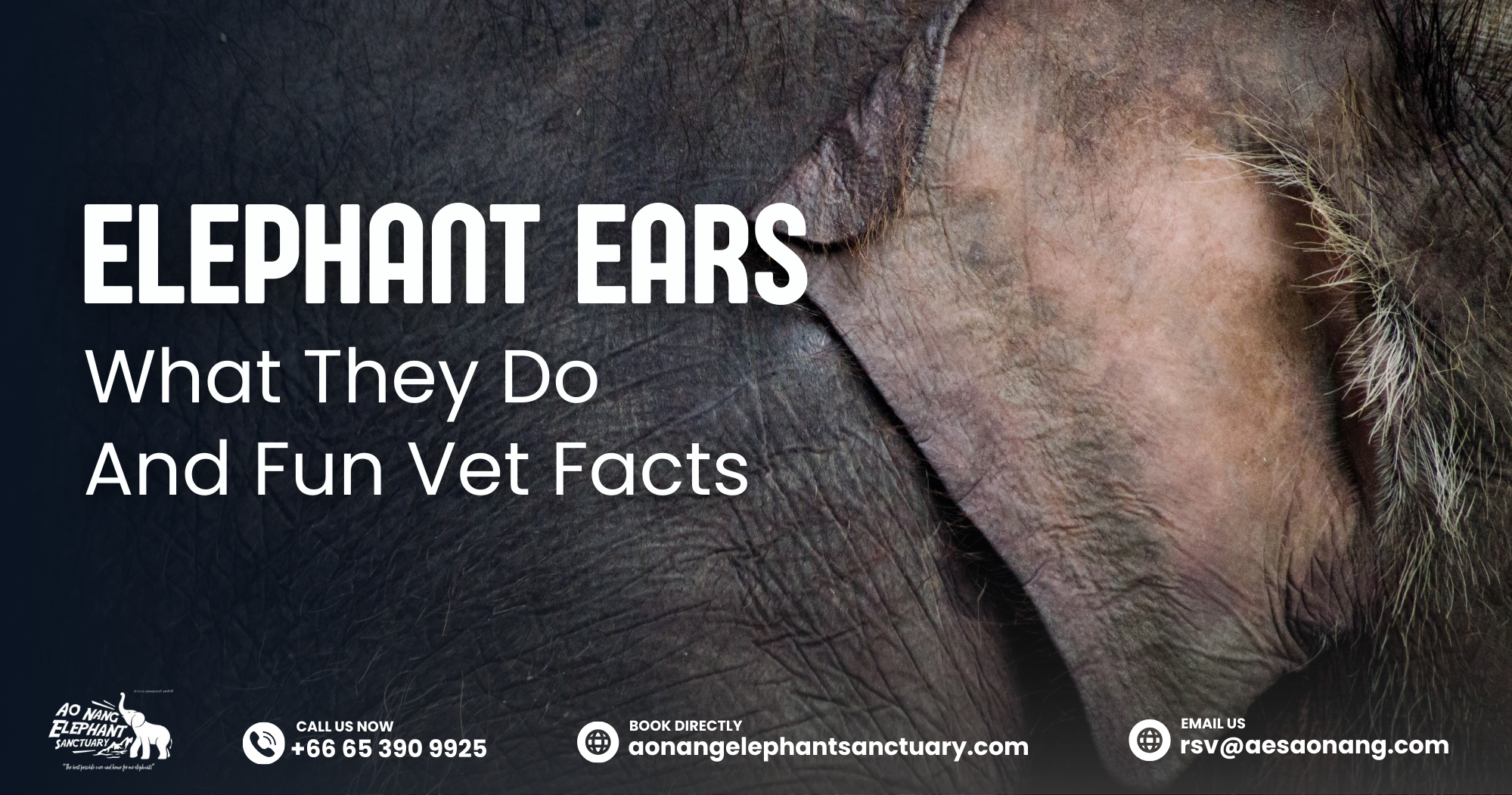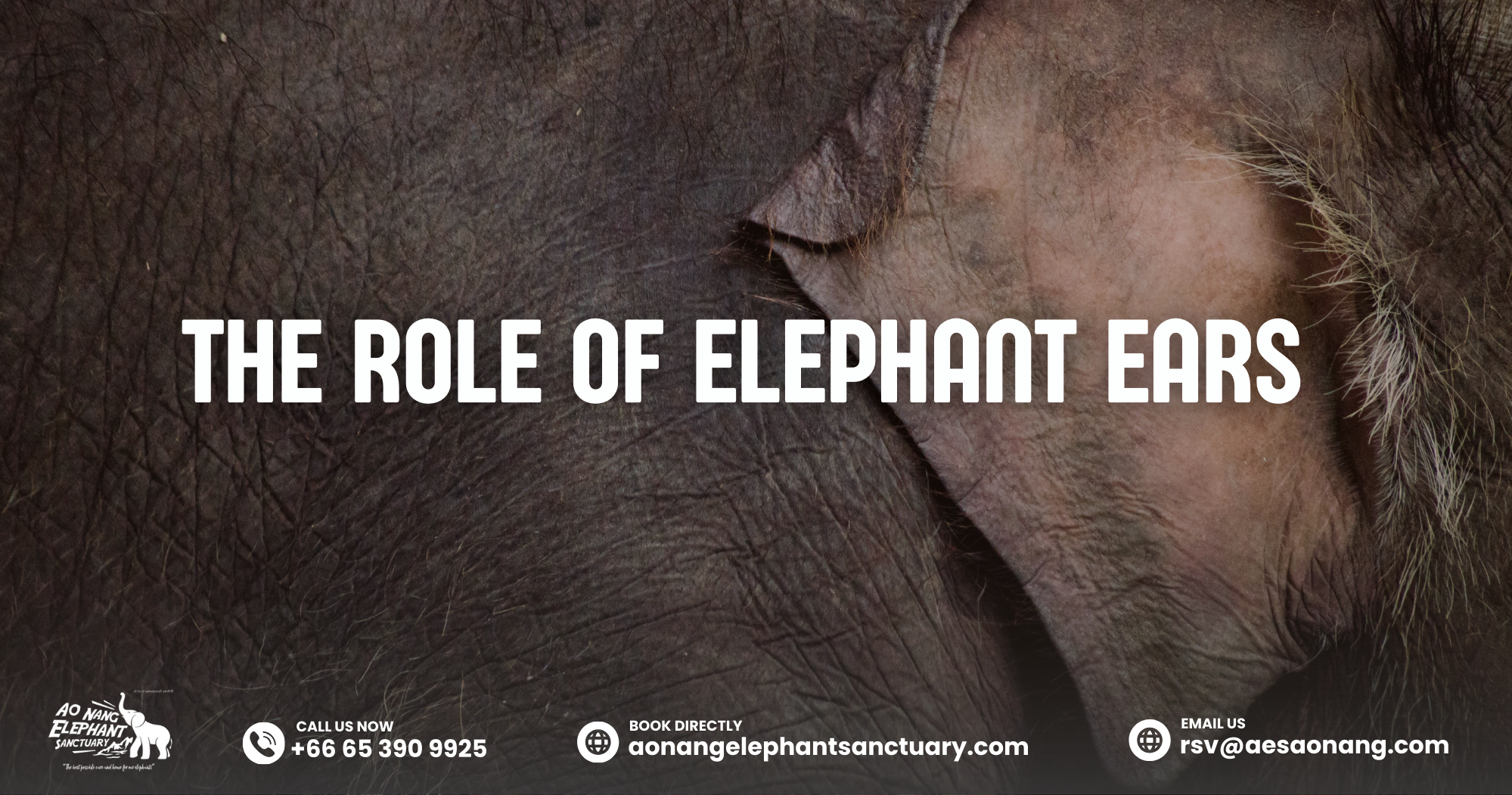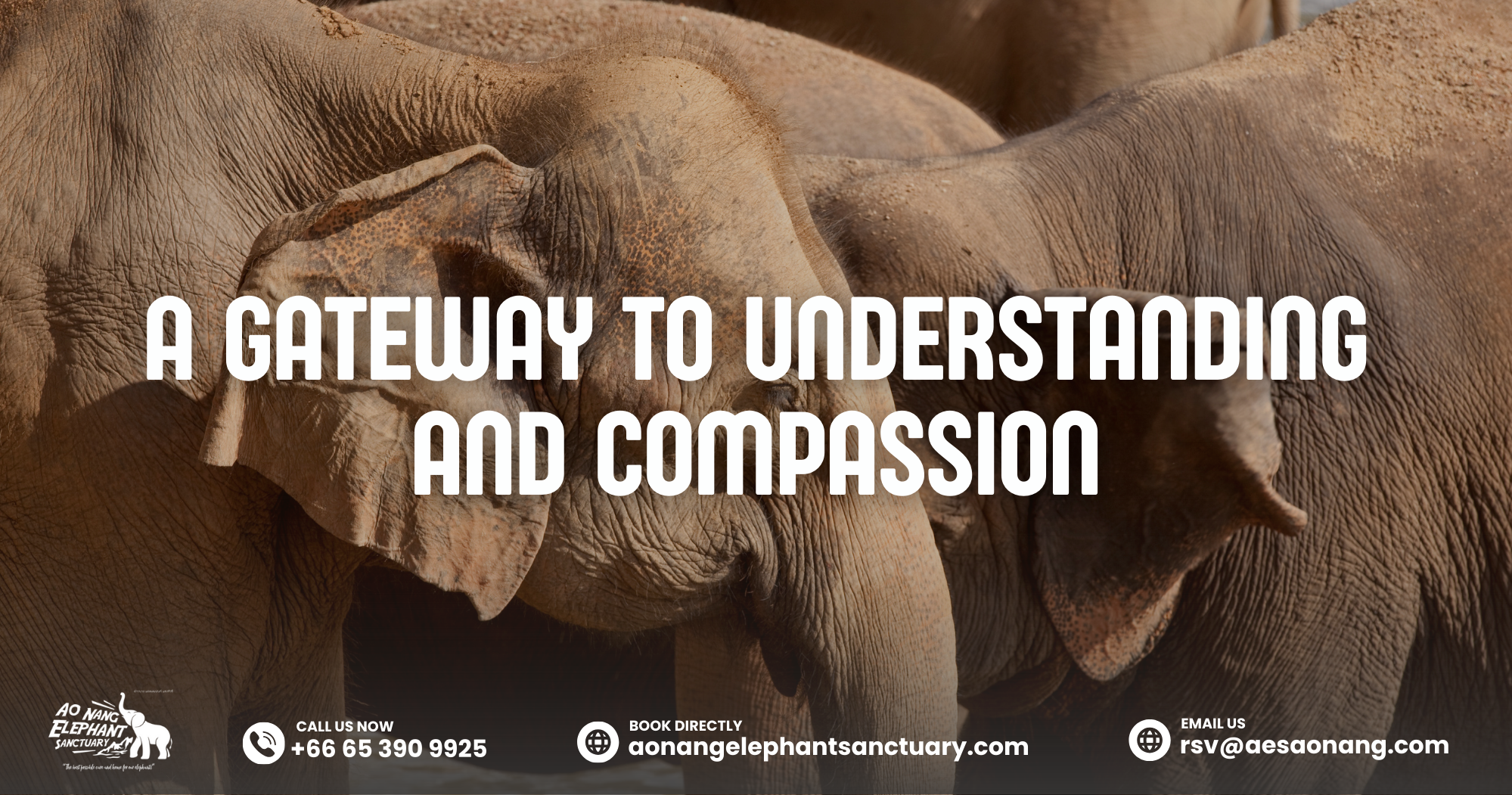Elephants are known for the very sight of their large flapping ears. More than just a stunning characteristic, these ears are the main siblings of the animal that keep it alive, let it communicate, and even help in veterinary assistance. Visitors to Ao Nang Elephant Sanctuary are among those who often ask why elephant ears are so big and how they function. The answer links up incredible research, animal behavior, and useful care.
In this blog, we’ll find out how elephants use their ears, what size differences there are between species, the role that ears play in communication, and the unexpected ways that vets check out the health of the ears. You will also find interesting facts about these predators that will make you more and more impressed by them.
Why Are Elephant Ears So Big?
The dimensions of elephant ears have a strong connection with the shape of their habitat. The African elephants, which dwell in the open savannas with blazing sun, have ears geographically shaped like the African continent. These huge ear surfaces not only allow them to give off heat, but also serve as a survival strategy in their hot and dry ecosystems.
Asian elephants, which also consist of elephants in Thailand, are dwellers of forests and shade is usually available there. Their ears are smaller and round in shape, making them very suitable for a moist and protected habitat. This is the most significant among the different species that can be easily separated.
The Role Of Elephant Ears
Built-In Cooling Systems
The most famous function of elephant ears is thermoregulation. The thin skin covering the ears is filled with a dense network of blood vessels. By flapping their ears, elephants pump warm blood to the surface, where heat escapes into the air.
On especially hot days, an elephant may stand in the shade and flap continuously. This process can lower body temperature by several degrees. Imagine ears working as a natural air conditioner, keeping the world’s largest land mammals comfortable under the tropical sun.
Sanctuary visitors often see elephants resting near trees while rhythmically moving their ears. What looks like a lazy gesture is actually a highly efficient cooling mechanism.
Communication Through Movement
Ears are also powerful tools of expression. Just as humans use gestures or facial expressions, elephants rely on ear movements to signal mood and intention.
- Wide flapping: often a relaxed state.
- Ears spread outward: a sign of alertness or mild threat display.
- Pinned back ears: stress, irritation, or defensive behavior.
Understanding these signals allows mahouts and veterinarians to understand elephant emotions. For guests, understanding elephant language gives them more insight into an elephant’s mood, which is not simply about watching but a kind of feeling.
While walking with the elephants at Ao Nang, a guide will often show the visitors the ear movements and teach them how to “read” the animals on the spot.
The Role Of Elephant Ears In Hearing
Besides using their ears for cooling and signaling, elephants use their ears to hear far better. Their size and shape contribute to the natural satellite-like characteristics, collecting the sound waves and directing them to the inner ear. This feature is very crucial as elephants do not only use calls that are audible for humans, but also low-frequency rumbles that humans cannot hear.
Elephants can feel and hear even the smallest vibrations and calls from a far distance. Large ears do not just make the hearing better, but also help the elephants to find the source of the sound quickly. For herds, this is very important as it is an aid in the coordination, safety, and maintenance of bonds over a wide area of land.
At the sanctuary, guests can see the elephants that react to calls from others across the enclosures. The subtle flapping of the ears and the alert posture are often signs that the sound is there even before humans can hear it—a great example of their excellent hearing.
Veterinary Facts About Elephant Ears
- Measuring Vital Signs: Veterinarians can feel an elephant’s heartbeat through the ear veins, where the blood flow is very visible. This is a simple way to check the circulation without using invasive tools.
- Monitoring Hydration: The condition of the ears can be an indicator of the water levels in the body. Dry and cracked ear edges may indicate dehydration and stress, while healthy ears are always supple.
- Administering Medication: They can be used for blood collection or delivering medication safely. In this way, the animal can be calmed, and stress can be reduced.
- Detecting Infections: The most common causes of the ears are cuts, tears, and insect bites. Veterinarians keep an eye on the affected area very closely, as they have the potential for infection due to ear injuries if they go deep enough.
Why Ear Care Matters In Sanctuaries
If we take Ao Nang as an example of a moral sanctuary, we can see that the sanctuaries’ daily routines include the monitoring of the elephants’ ear health. Elephants do most of the time rub against trees or walls, thus causing scratches or minor cuts. This is the time when caretakers come in to do regular inspections of the ears to clean up the cuts and make sure that no flies or ticks are causing the animal discomfort.
Since mud baths are the main source for the skin protection of the elephants, the caretakers make sure that the ears are well-covered as the mud helps keep off the insects. Guests often get the opportunity to witness or partake in these activities as they understand how such small acts make the animals’ lives comfortable.
Unique Ear Characteristics
Nothing like human fingerprints, no two elephants have identical ears, and the edges of the elephant ears are made up of patterns and notches. The singularity of these animals helps researchers and caretakers know which ones are in the wild or in sanctuaries.
Upon Arrival at Ao Nang, visitors are acquainted with the elephants through their ears. Guides point out the special tears, curves, or folds that distinguish one animal from another. It turns out to be an intimate way to keep in mind each elephant and link their experience to a physical trait.
Visitor Experience: Seeing Ears In Action
For most visitors, getting the chance to see the elephant’s ears up close is definitely one of the things that they will remember after visiting the sanctuary. You might witness an elephant using its ears to fan itself during the hottest part of the day, or it could be that the elephant is reacting to a call far away, or it might be showing its feelings through very slight movements of its ear.
These instances are what pictures usually want to record—big ears that are either fully open or softly folded, thus each elephant gets its unique character. It is a cue that although these might seem as simple anatomy, they are in fact a very complex, living part of communication and care.
A Gateway To Understanding And Compassion
Elephant ears are not just large flaps of skin; they are cooling mechanisms, devices for communication, hearing enhancers, and the places veterinarians check for the animals’ health. By looking at them and figuring them out, people see them have a glimpse of what the elephants do in the day and how they are feeling.
Visitors to Ao Nang Elephant Sanctuary are given an explanation of the amazing characteristics and a demonstration of their significance. Each flap is an illustration of evolution, safety, and nurture.
If you intend to visit Krabi, why not get up close and personal with elephants? Make a reservation at Ao Nang Elephant Sanctuary and learn why ears, one of the most recognizable elephant features. They are nature’s marvels and intricate creatures.
Reserve your spot now to get a chance to meet Asian elephants!
- Phone: +66 65 390 9925
- Email: [email protected]
- Book directly at aonangelephantsanctuary.com





